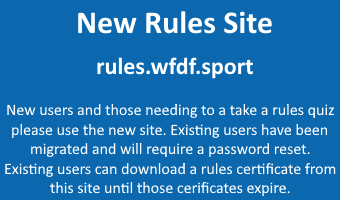12. Receivers and Positioning
-
12.1. A “catch” occurs when a player has a non-spinning disc trapped between at least two body parts. A catch can enable a player to establish possession of the disc.



-
12.1.1. If the player fails to maintain the catch due to subsequent ground contact related to the catch, or contact related to the catch with a team-mate or a legitimately positioned opposition player, possession is deemed to have not occurred.

-
12.2. After establishing possession, that player becomes the thrower.
-
12.3. If offensive and defensive players catch the disc simultaneously, the offence retains possession.
-
12.4. A player in an established position is entitled to remain in that position and must not be contacted by an opposing player.
-
12.5. Every player is entitled to occupy any position on the field not occupied by any opposing player, provided that they do not initiate contact in taking such a position, and are not moving in a reckless or dangerously aggressive manner.


-
12.5.1. However when the disc is in the air a player may not move in a manner solely to prevent an opponent from taking an unoccupied path to make a play on the disc.

-
12.6. All players must attempt to avoid contact with other players, and there is no situation where a player may justify initiating contact. This includes avoiding initiating contact with a stationary opponent, or an opponent’s expected position based on their established speed and direction. “Making a play for the disc” is not a valid excuse for initiating contact with other players.



-
12.6.1. If a player is not reasonably certain that they will be able to make a legal play at the disc before an opponent who is moving in a legal manner, they must adjust their movements to avoid initiating contact. If that adjustment is made, the result of the play still stands.
-
12.7.The player who initiates contact is deemed to be the player who:

-
12.7.1. arrived at the point of contact after the opponent had already established a legitimate position at that point (either a stationary or moving opponent), or
-
12.7.2. adjusted their movements in a way that created unavoidable contact with an opponent moving in a legal manner, when taking into account all players’ established position, speed and direction.
-
12.8. Some minor contact may occur as two or more players move towards a single point simultaneously. Minor contact should be minimized but is not considered a foul.

-
12.9. Players may not use their arms or legs to obstruct the movement of opposing players.
-
12.10. No player may physically assist the movement of another player, nor use an item of equipment or object to assist in contacting the disc.

-














